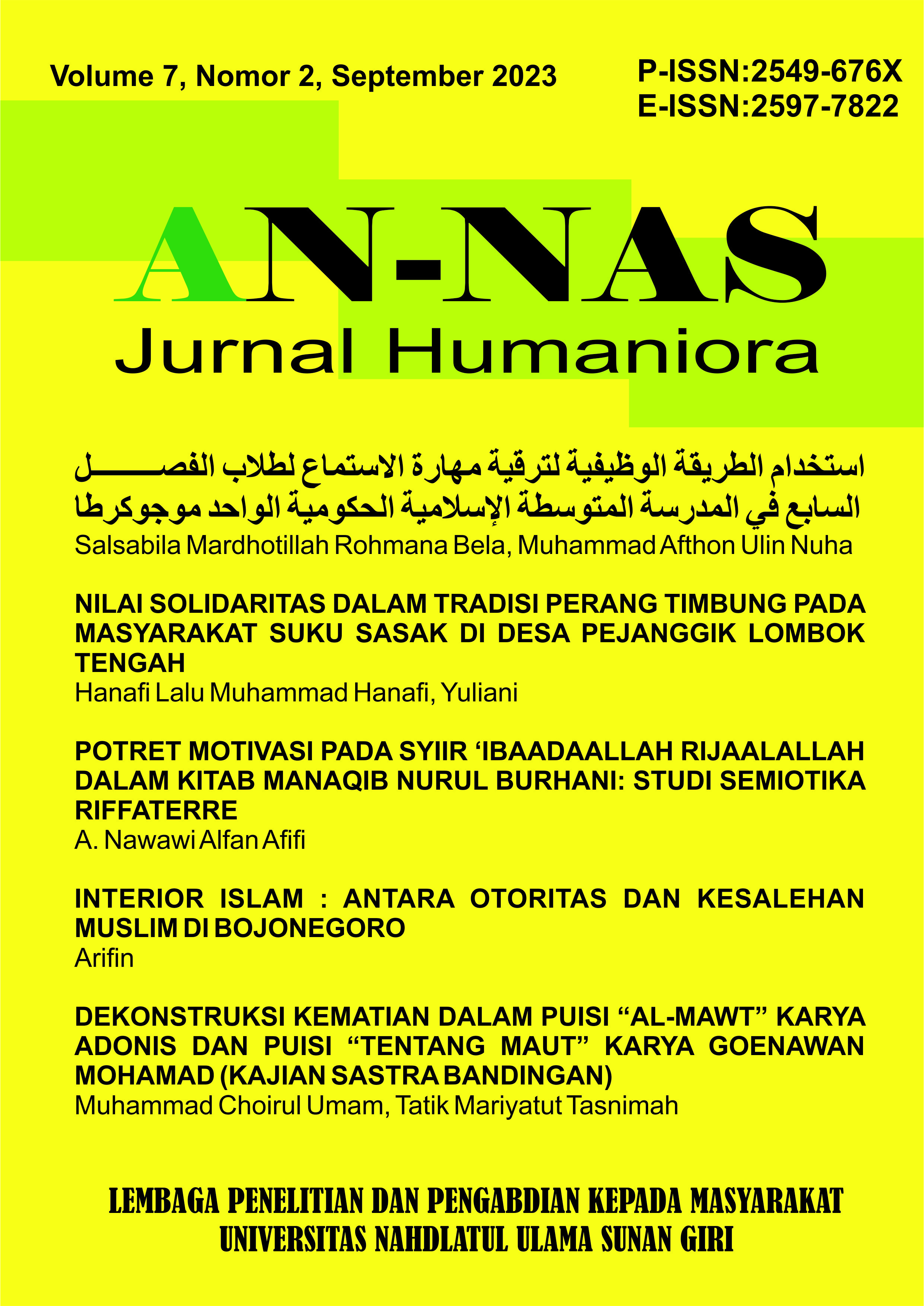INTERIOR ISLAM : ANTARA OTORITAS DAN KESALEHAN MUSLIM DI BOJONEGORO
 PDF Download: 62
PDF Download: 62
DOI:
https://doi.org/10.32665/annas.v7i2.2055Keywords:
Religious authority, Muslim’s Pety, PilgrimsAbstract
This article will examine the Muslim community in the hinterland of Bojonegoro, to be precise in Glingsem Hamlet, Soko Village, Temayang District. By tracing the praxis of the formation of the Jamaah, and a charismatic figure, who is recognized as a descendant of the Prophet, Habib Fauzi al-Jufri. Apart from that, this article also explores how the piety of a Muslim is formed by following the congregation which is routinely carried out during Selapanan (a term in Javanese in 36 days). Departing from the assumption that religious authority has shifted due to globalization and has formed a new authority in understanding religion which is marked by the consumption of social media. With an ethnographic review that went down and directly followed the events carried out in the routine of the Jamaah for 6 months, which started from early February to 6 July 2023, the researcher found that the authority formed through the Jamaah was able to shape Muslim piety awareness. Using Anthropological analysis with a historical praxis approach, this article in analyzing Religious Authority follows the work of Ismail Fajri al-Attas entitled "What is Religious Authority?: Growing Muslims in Indonesia,".
References
Alatas, Ismail Fajrie. “Dreaming Saints: Exploratory Authority and Islamic Praxes of History in Central Java.” Journal of the Royal Anthropological Institute 26, no. 1 (2020): 67–85. https://doi.org/10.1111/1467-9655.13177.
Hakim, Lukman. “Urban Sufisme Dan Remaja Milenial Di Majelis Taâ€TA'lim Dan Sholawat Qodamul Musthofa Kota Pekalongan.” JOUSIP: Journal of Sufism and Psychotherapy 1, no. 1 (2021): 51–68. https://doi.org/10.28918/jousip.v1i1.3885.
Krämer, Gudrun, and Sabine Schmidtke. Speaking for Islam: Religious Authorities in Muslim Societies. Edited by Gudrun Krämer and Sabine Schmidtke. Social, Economic and Political Studies of the Middle East and Asia. Vol. 100. Leiden. Boston: Brill, 2006.
Press, Nebraska. “The Idea of an Anthropology of Islam Author ( s ): TALAL ASAD Stable URL : Http://Www.Jstor.Org/Stable/20685738 Linked References Are Available on JSTOR for This Article : The Idea of an Anthropology of Islam” 17, no. 2 (2016): 1–30.
Rizka, Haera. “Theater Association of The Religious Groups in Yogyakarta During the 1960s.” SHAHIH: Journal of Islamicate Multidisciplinary 4, no. 2 (2019): 75–91. https://doi.org/10.22515/shahih.v4i2.1875.
Rumadi, Rumadi. “Islam Dan Otoritas Keagamaan.” Walisongo: Jurnal Penelitian Sosial Keagamaan 20, no. 1 (2012): 25. https://doi.org/10.21580/ws.20.1.183.
Thomas, D. A.Lloyd. “E Pluribus Unum.” Canadian Journal of Philosophy 7, no. sup1 (1977): 49–70. https://doi.org/10.1080/00455091.1977.10717040.
Whyte, Shaheen Amid. “Islamic Religious Authority in Cyberspace: A Qualitative Study of Muslim Religious Actors in Australia.” Religions 13, no. 1 (2022): 1–16. https://doi.org/10.3390/rel13010069.
Downloads
Published
License
Copyright (c) 2023 Arifin

This work is licensed under a Creative Commons Attribution 4.0 International License.
 PDF Download: 62
PDF Download: 62





